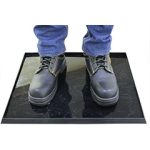Introduction
Speed bumps are an essential traffic control measure, particularly for residential driveways. They serve as an effective tool in regulating traffic speed, promoting safety, and reducing accidents. However, choosing the right speed bumps for your driveway requires careful consideration of various factors to ensure their effectiveness and efficiency. This article aims to provide guidance in selecting suitable speed bumps for different driveways by discussing the key factors one should consider. From understanding the purpose of speed bumps to the types available and legal considerations, we will cover all the essential aspects to help you make an informed decision. So, if you want to improve the safety and efficiency of your driveway, keep reading.
Understanding the Purpose of Speed Bumps
Why are speed bumps important for driveways?
Speed bumps are an essential tool for regulating traffic and ensuring safety on driveways. They serve as a visual deterrent, reminding drivers to slow down and navigate with caution. This is especially important in residential areas, parking lots, and other spaces where pedestrians and vehicles share the same space.
But the purpose of speed bumps goes beyond just controlling speed. They can also be used to separate different types of traffic, such as cars and bicycles, or to prevent vehicles from entering restricted areas.
The Need for Different Types of Speed Bumps:
It’s important to note that not all speed bumps are created equal. Different types of speed bumps serve different purposes and are suitable for different locations. For example, a speed hump may be more effective in a residential neighborhood, while a speed cushion may be better suited for a parking lot with frequent bus or truck traffic.
- Traffic volume and speed: The amount of traffic and the speed at which vehicles travel on the driveway should be taken into consideration when choosing the right speed bump. A busy road with fast-moving vehicles may require a more prominent speed bump, while a quiet residential street may only need a smaller one.
- Weather conditions and terrain: The effectiveness of speed bumps can also be impacted by weather conditions and the terrain of the driveway. For example, a rubber speed bump may not be as effective in icy or wet conditions, while a concrete one may be more durable in a hilly area.
- Type and weight of vehicles: The type and weight of vehicles using the driveway should also be considered. A speed bump that can safely slow down a car may not be suitable for larger vehicles like trucks or buses.
Considering these factors will help you choose the most appropriate speed bump for your specific needs, ensuring maximum effectiveness and safety.
Factors to Consider Before Choosing Speed Bumps
Before making a decision on the type of speed bumps to install on your driveway, there are several important factors that you should take into consideration. These factors can greatly affect the effectiveness and suitability of the speed bumps for your specific needs.
Firstly, it is crucial to consider the traffic volume and speed of the road. The type of speed bumps needed for a busy highway will be different from those needed for a quiet residential street. Additionally, the weather conditions and terrain of the area should also be taken into account, as they can impact the performance of the speed bumps.
Another important factor is the type and weight of vehicles that will be using the driveway. Heavy vehicles such as trucks and buses will require stronger and more durable speed bumps compared to smaller cars. This is to ensure that the speed bumps can withstand the weight and not cause any damage to the vehicles.
By carefully considering these factors, you can choose the most suitable speed bumps for your driveway that will effectively regulate traffic and ensure safety. It is also important to regularly maintain and inspect the speed bumps to ensure they are functioning properly.
Types of Speed Bumps Available
There are several types of speed bumps available in the market, each designed for specific purposes and locations. The three main types of speed bumps are speed humps, speed tables, and speed cushions.
Speed Humps:
Speed humps are the most common type of speed bumps, designed to reduce vehicle speed to 10-15 mph. They are typically 10-14 feet long and have a gradual incline and decline, making them suitable for areas with low to moderate traffic volume. Speed humps are often used on local roads and residential streets.
Speed Tables:
Speed tables are longer and flatter versions of speed humps, with a flat section in the middle to allow for easier crossing for emergency vehicles and cyclists. They are useful for areas with higher traffic volume and speed, such as parking lots and industrial areas. Speed tables can also act as traffic calming measures in school zones and playgrounds.
Speed Cushions:
Speed cushions are designed to target specific lanes of traffic, such as bus and emergency vehicle lanes, while allowing other vehicles to pass through without slowing down. They consist of several raised sections, with gaps in between for tires to pass through. Speed cushions are suitable for areas with high traffic volume and speed, such as main roads and highways.
Each type of speed bump has its advantages and disadvantages, and the right one for your driveway will depend on various factors, such as traffic volume, the speed of the road, and the type of vehicles using the driveway. Consider these factors carefully before making a decision to ensure the most effective and appropriate speed bump is chosen for your needs.
Material and Installation of Speed Bumps
When it comes to choosing the right speed bumps for driveways, the material and installation are crucial factors to consider. Speed bumps can be made from various materials such as rubber, plastic, or concrete, each with their own pros and cons. It is important to select a material that can withstand the weight and frequency of vehicles using the driveway. Additionally, proper installation is essential for maximum effectiveness and safety. Make sure to follow the manufacturer’s instructions or hire a professional for installation. Remember, the durability and maintenance requirements of the material will also impact the long-term cost of the speed bumps. Taking the time to carefully consider the material and installation can ensure a safe and long-lasting solution for your driveway.
Legal Considerations
There are important legal considerations to keep in mind when installing speed bumps on your driveway. Before making any decisions, it is crucial to research and understand the local regulations and laws regarding the use of speed bumps on private property. This may include obtaining necessary permits and approvals from your local government. Failure to comply with these regulations can result in legal consequences.
Additionally, it is important to consider potential liability issues when installing speed bumps. While they can effectively regulate traffic and improve safety, improper installation or maintenance of speed bumps can result in accidents and injuries. To mitigate this risk, it is recommended to consult with a professional and ensure proper installation and maintenance of your chosen speed bumps. Taking these legal considerations into account will help ensure a safe and trouble-free experience with speed bumps on your driveway.
Cost Analysis
When considering the right speed bumps for your driveway, one important factor to consider is the cost. The price of speed bumps can vary depending on the type, material, and installation method. On average, speed humps cost around $100-$200 per unit, while speed tables and cushions can range from $500-$1000. It’s important to keep in mind that the initial investment can lead to long-term savings in terms of safety and reduced accidents. Additionally, the cost of maintenance should also be considered, as some materials may require more frequent repairs or replacement. It’s essential to choose cost-effective speed bumps without compromising on quality. Consider getting quotes from different suppliers and comparing prices to find the best option for your budget. Remember, investing in the right speed bumps can ultimately save you money in the long run while ensuring the safety of drivers and pedestrians.
Conclusion
In conclusion, choosing the right speed bumps for your driveway is a crucial decision that requires careful consideration. By understanding the purpose of speed bumps and the factors that influence their effectiveness, you can make an informed decision that enhances safety and efficiency on your driveway.
Remember to take into account the traffic volume, speed, and types of vehicles on your driveway, as well as weather conditions and terrain. Consider the various types of speed bumps available and their pros and cons, as well as the materials and installation methods. Additionally, be sure to comply with local regulations and obtain necessary permits before installing speed bumps.
While there may be initial costs involved, investing in the right speed bumps can lead to long-term savings in terms of safety and reduced accidents. So, take the time to assess your needs and choose the most suitable and cost-effective speed bumps for your driveway. With the right speed bumps in place, you can ensure a safe and efficient traffic flow on your property.







